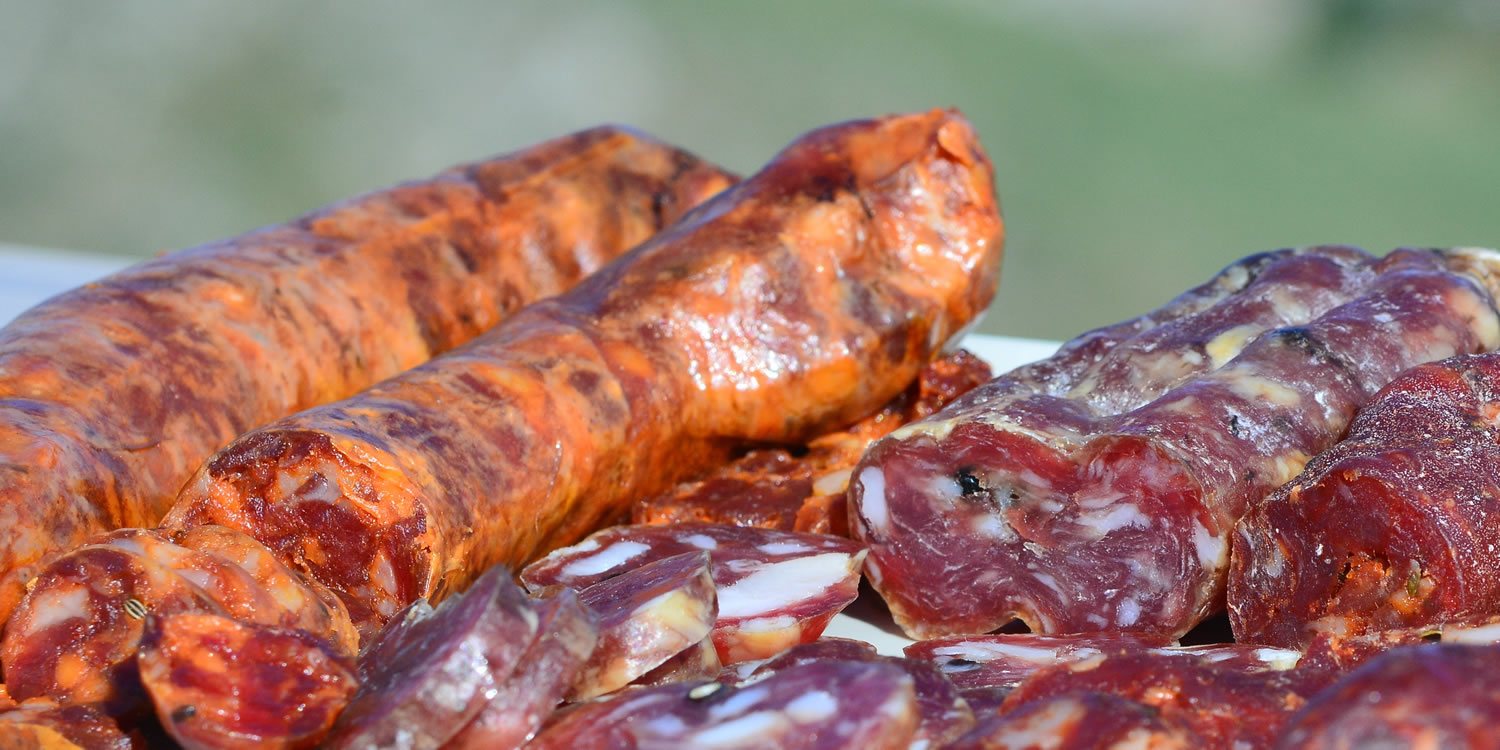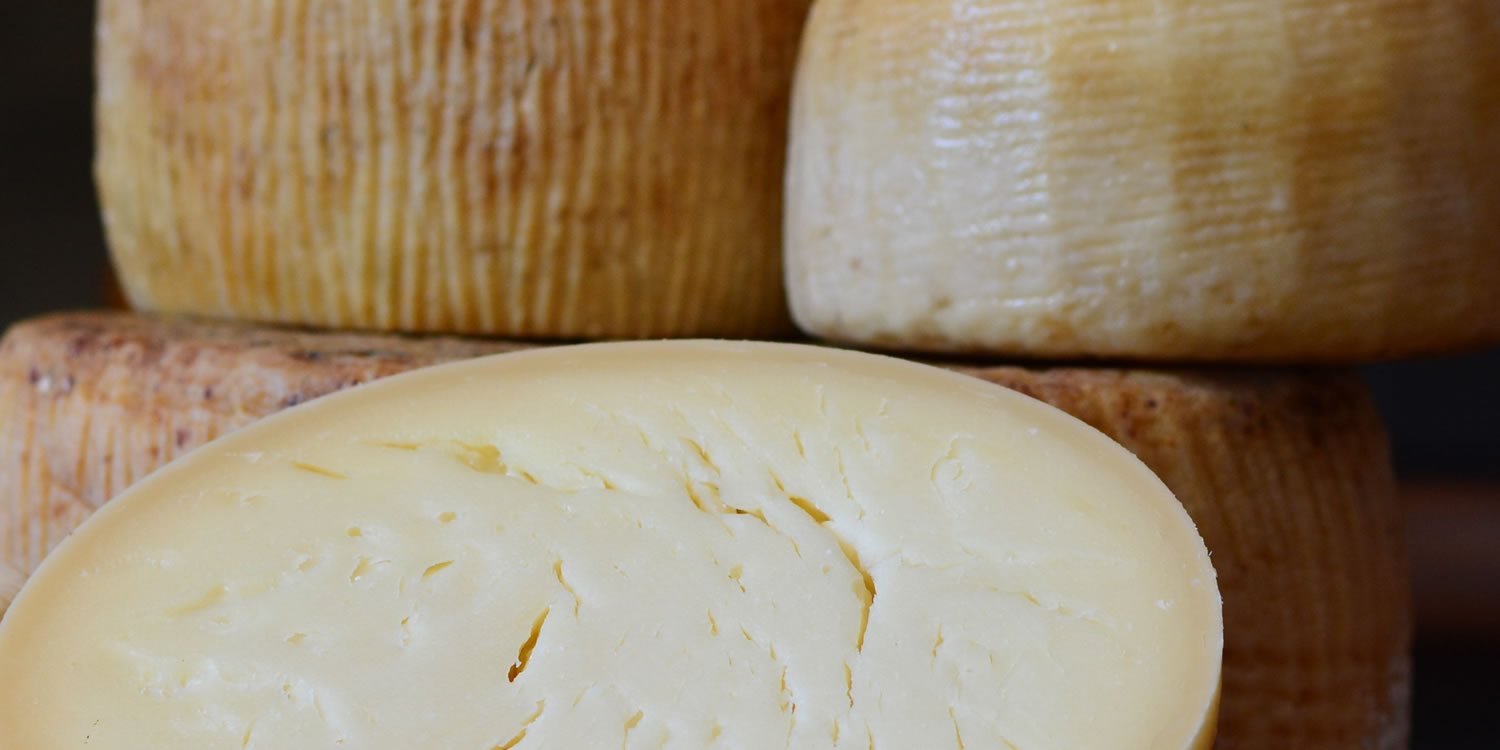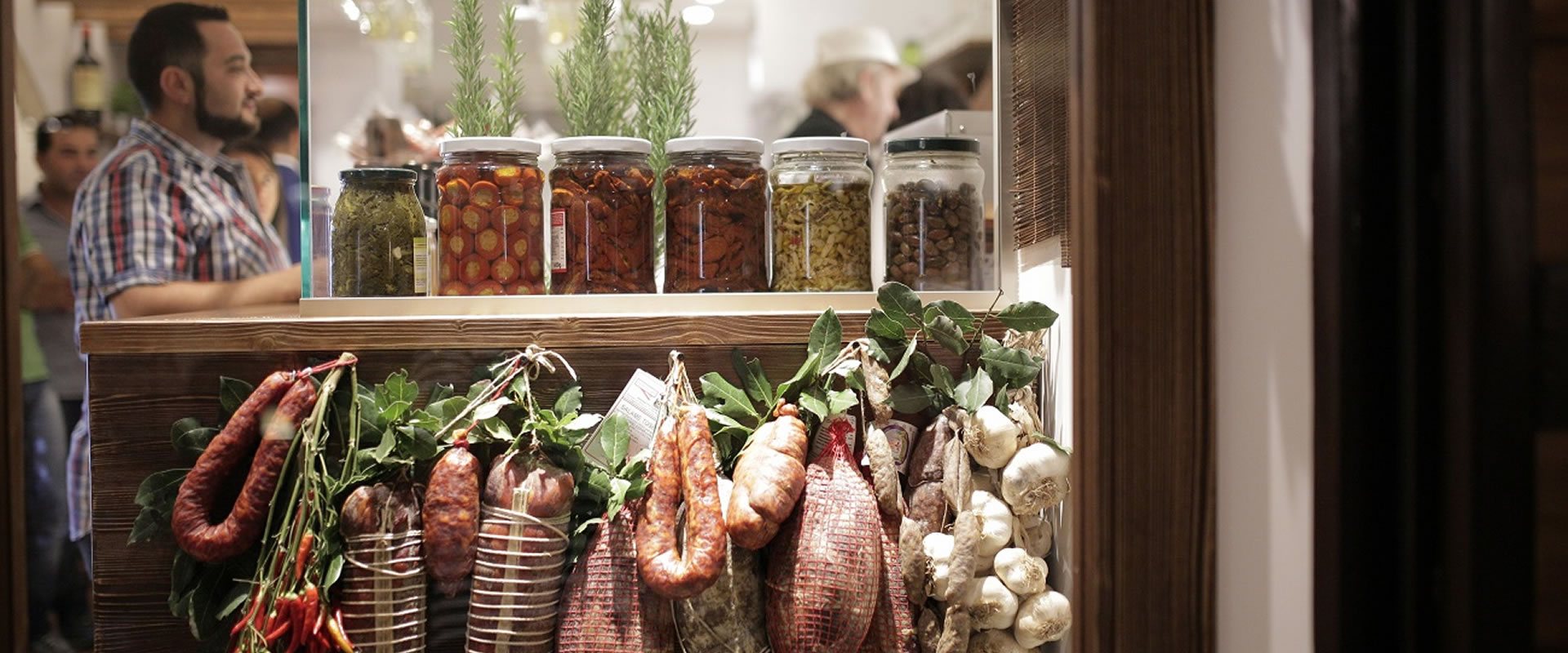The culture of sausages in Basilicata is one of the most important historical-gastronomic heritages in southern Italy. Lucanian sausage was already known and appreciated during the Roman Empire, as witnessed by Marcus Gavio Apicius, who in 25 B.C. speaks of a typical sausage from Lucania very similar to what is known today as sausage.
Even today in Italy the term
lucanega (meaning coming from Lucania) is synonymous with sausage.

Soppressata
This cured meat is made from pork tenderloin, lard, salt and black pepper and takes its name from a pressing stage it undergoes.
After aging in a cellar for 4-5 months, it can be eaten, vacuum-packed or placed in fat. In some countries it is also called soperzata; of limited production, it comes from the meat of local pigs raised traditionally and fed naturally. Of the pork, only the finest meat from the thighs or the middle part of the loins are used, carefully trimmed of the sinewy parts, which, once diced by means of a knife or special dies, are mixed with a little lard (also reduced to small pieces), salt, peppercorns and powdered bell pepper.
Having reached the right consistency, the mixture is stuffed into natural pig intestines and the resulting sausage is placed for a couple of days in wicker baskets. After an initial drying process followed by pressing, it stays for a month or more, depending on weather conditions, in environments particularly suitable for curing, which can sometimes include light smoking.
Seasoned sausage
This is a cured sausage made by selecting the lean parts of pork ham that are knife-cut, spiced and stuffed using natural gut. Lucanian sausage is made with selected meat from locally raised pigs fed on natural products, among the typical pig breeds of Lucania is the prized Suino Nero.
As with all artisanal productions, it is difficult to provide a precise and unique recipe. It can be found in various versions depending on the area of origin.
Normally, when the highest quality standards are to be achieved, it is prepared using prime meats and, more precisely, shoulder and coppa cuttings, maniacally cleaned of all those parts that are annoying during chewing such as nerves, tendons and cartilage.
In addition to the canonical salt and pepper, the mixture is enriched with fennel seeds and a reasonable percentage of sweet or hot red chili powder. Stuffed into natural pork casing, the sausage is placed in wicker baskets and left to rest overnight; then, the next morning, it is hung and dried, with the initial contribution of a fireplace, for 15 to 20 days. Typically U-shaped, it has a mildly spicy taste and a fairly intense aroma.
Cheeses
Matera morphologically is located on Apulian territory, the Murge, and with this it shares its uses, customs and traditions. Apulian agro-pastoral culture, especially that of the Murgia area of which Matera is an integral part, is world famous for its dairy products.
Predominantly obtained by the skilled hands of cheesemakers these fresh cheeses are still prepared by hand in an artisanal way. Mozzarella, scamorze, and various types of provole and provoloni are made from cow’s milk, while cheeses and caciotte for aging are made from sheep’s or goat’s milk.
The predominant livestock farming in Basilicata was undoubtedly sheep farming from which, in addition to sheep’s milk cheese, the precious wool that Basilicata supplied in large quantities to manufacturing before the unification of Italy was also made.
Some Lucanian pecorino cheeses have earned P.D.O. status, such as Pecorino di Filiano and Il Canestrato di Moliterno, excellent table cheeses that rank among the best pecorino cheeses in Italy.

Canestrato di Moliterno
This pecorino is among the most renowned cheeses from Lucania.
The IGP - Protected Geographical Indication - recognition covers Canestrato di Moliterno aged in caves.
The milk used to make this Pecorino is produced in a vast area of Basilicata where there were traditionally transhumance routes and is processed and aged only in some peculiar cellars-caves, the Fondaci, preseni in the town of Moliterno.
The very etymology of the name Moliterno seems to mean precisely the place where the cheese is aged.
Tradition has it that Canestrato di Moliterno is distinguished according to maturity between: primitive, if the maturation does not exceed 6 months; aged, if the maturation does not exceed 12 months; and extra, if the maturation exceeds one year.
Pecorino di Filiano D.O.P.
Pecorino di Filiano DOP is a cheese from the northwestern area of Basilicata. It obtained EU PDO recognition in December 2007.
It is a hard, semi-cooked cheese made from whole, raw sheep’s milk. The color of the rind, which is characterized by the marks of the typical baskets in which the cheese is placed, varies from golden yellow to dark brown, depending on the ripening process, while the paste, grainy and crumbly, varies in color from white to straw-colored.
The texture is firm while showing small eyes in an irregular manner. The fresher cheese has a mild and delicate flavor, while the aged one is slightly spicy and tends to be more so as it ages.
Pecorino di Filiano DOP is an excellent table cheese, and because of its strong flavor it goes well with the strong flavors of many typical Lucanian dishes. As a grated cheese it is a must on homemade pasta served with meat sauce.
It pairs well with local wines such as Aglianico del Vulture DOC.
Cruschi peppers of Senise
Crusco means crunchy, this is the main characteristic that these particular peppers typical of the Senise area in southern Bassilicata must have.
Fresh there are three types, pointed truncated or hooked. All varieties have the characteristic of holding the stalk firmly to the bell pepper even after it has been dried.
What makes these peppers unique and inimitable lies in the thinness of the flesh that when dried and fried gives a unique crispness and flavor to this particular type of bell pepper.
Once harvested, the precious and expensive peppers, called the red gold of Basilicata, are strung one by one in a "serta" and hung to dry in the shade.
Once dried they can be eaten whole through skillful and quick frying, or finely chopped (zafaran, or pepone) which is used to season sausages to be dried or bean soups with pasta or other soups.
Fresh peppers are harvested in early August, and it is very nice to walk around the producing towns and see these red serta hanging in windows, on balconies, and everywhere.



